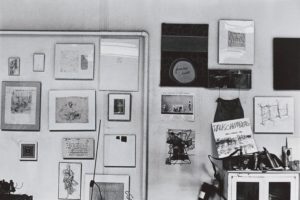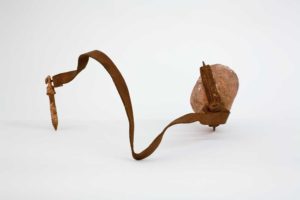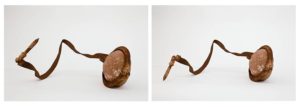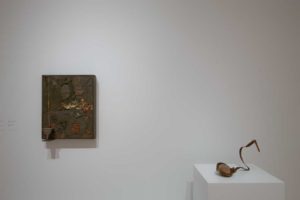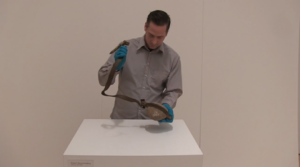In September 1953, a selection of Robert Rauschenberg’s recently produced Elemental Sculptures debuted at Stable Gallery, New York. This series of small assemblages combined stone, wood, rusted metal, and other objects the artist had scavenged from construction sites around his Fulton Street studio. Originally numbering nineteen (of which only nine still exist), this group of mostly untitled artworks shared a drab brown-gray aesthetic defined by rust, dirt, grime, and age, and suggested a kind of archaeological appreciation of mid-century Manhattan. Vaguely reminiscent of improvised tools or handmade toys, the Elemental Sculptures emerged as the young artist was transitioning from a practice defined largely by painting and photography to a more experimental mode that would culminate in his Combines, an expansive body of works produced primarily in the mid- and late 1950s that bridged the gaps between painting, sculpture, and collage.
A crucial step in Rauschenberg’s artistic development, the Elemental Sculptures amounted to small-scale experiments in the combination of disparate forms and materials. In these works we see the artist considering qualities such as mass, volume, scale, and balance through a variety of means. For some sculptures he used frayed rope or twine to tether dense stones to roughly hewn fragments of wood, or placed stones atop (or inside of) weathered wooden boxes. In another, he adorned a fractured piece of concrete with a chunk of brick suspended from a twisted metal rod, capitalizing on both the geometric features of these materials and their shared association with construction. Significantly, Rauschenberg initially intended the audience to engage with the movable elements of these pieces: visitors to Stable Gallery were encouraged to rearrange the small sculptures to more fully comprehend their materiality, weight, proportions, and structure.
Consisting of a rusted steel strap anchored by a circular stone and tipped by an iron bolt, Untitled (Elemental Sculpture) [steel flange and stone] (ca. 1953) provides a vivid example of such an invitation. Because the steel strap and flange are hinged and therefore fully flexible, the piece may be displayed in a number of different configurations, each stressing a different sense of gravity or vaguely implied purpose. In some orientations the sculpture resembles an ancient sling loaded for launching, while in others the strap and bolt seem to defy the stone’s otherwise overwhelming gravitational force, recalling the arc of a snake preparing to strike.
